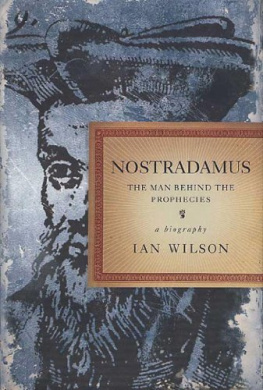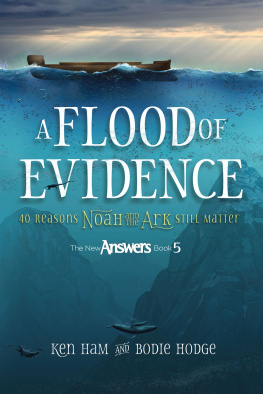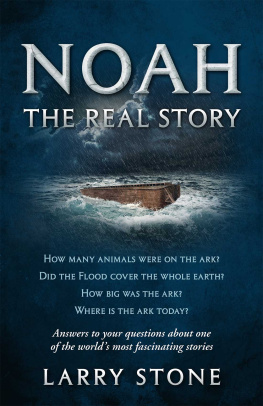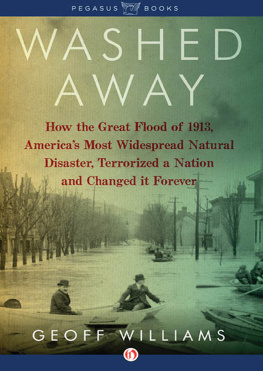
The author and publisher have provided this e-book to you for your personal use only. You may not make this e-book publicly available in any way. Copyright infringement is against the law. If you believe the copy of this e-book you are reading infringes on the authors copyright, please notify the publisher at: us.macmillanusa.com/piracy.
Contents
ACKNOWLEDGEMENTS
: Drawing from Alastair Hulls Living with Kilims, Thames & Hudson, 1988, p.35, courtesy Thames & Hudson.
Whilst every reasonable effort has been made to contact copyright owners, the author & publishers apologise in the case of any that have been untraceable and will be pleased to insert appropriate acknowledgement in future editions.
AUTHORS PREFACE
The days are long gone when one, or even two scholars, could master as many diverse fields as this book covers. With those words Mark Rose, managing editor of the admirable American journal Archaeology, dismissed the undeniably daunting hypothesis ventured in William Ryan and Walter Pitmans Noahs Flood.
Rose published his remarks in January 1999, and was not to know that by October of the same year Dr Robert Ballard of Titanic fame would find the first serious evidence of the truth of Ryan and Pitmans hypothesis. Or that this would be followed in September 2000 by Ballard finding the most astounding proof of this same.
This said, there is a very real sense in which Rose was right. Today archaeological work has become so specialised, so high-tech and so tightly focused on perhaps one site, the evaluation of which may become one or more scholars lifetimes work, that few professional archaeologists will dare to pull back and try to see a bigger picture.
But this is a catastrophe that happened eight thousand years ago, that affected huge areas of dry land, that touches on the work of climatologists, oceanographers, geologists, archaeologists and biblical scholars. It also spawned myths that have spread as far afield as Greece and India. Trying to see the bigger picture is then not only unavoidable, but also extremely important.
This book, which unashamedly follows Ryan and Pitmans most inspiring lead, is one such attempt. By training a historian, prehistory has frankly never had much appeal for me. Yet the task of a historian is to try to determine, from often very varied and conflicting types of evidence, what happened in the past, from mere decades ago, to several thousand years ago. And that is certainly the assignment here. In recent decades archaeology has made immense strides in being able to retrieve many minutiae from thousands of years ago that previous generations would have supposed gone forever. But in writing about such matters archaeologists all too often speak in a technical jargon that loses sight of what their discoveries mean about the lives of people from the past. In order to make matters simple there are instances in which scholars may feel that I have gone too far in the opposite direction. For instance, rather than use the term Neolithic I have opted for late Stone Age. Rather than use the usual terms Anatolia or Asia Minor when referring to Turkey as it is existed in ancient times I have kept it as Turkey, while making clear that this is its modern name.
The idea of writing this book came when researching my earlier The Bible is History, and my very special thanks are due to agent Daniela Bernardelle of David Higham and publisher Trevor Dolby of Orion for greeting it with immediate support and enthusiasm. In the course of my researching the book a mutual friend, Gillian Warr, kindly facilitated an introduction to Dr James Mellaart, excavator of atat Hyk, and I am deeply grateful to Gillian for this, also to Dr Mellaart for reading the manuscript, granting many most helpful insights, and allowing use of several of his fine illustrations. Geologists Professor Ian Plimer of the University of Melbourne and Dr Edward Rose of Royal Holloway College, University of London also generously contributed further help and expert knowledge, likewise archaeologists Dr. Fredrik Hiebert, John Romer and Denise Schmandt-Besserat. I am most grateful to Andrew George of London Universitys School of Oriental and African Studies, also to Penguin Books, for kindly allowing me to reproduce relevant portions from his excellent recent translation of the Epic of Gilgamesh. Special thanks are also due to Griselda Warr for helpful information-gathering; to Kay Macmullan for patiently tolerating some excessive authorial changes in the course of her copy-editing the manuscript; to Pandora White of Orion for most unflappably steering the book through to production; and above all to my ever-supportive wife Judith for spending countless hours unstintingly helping me on every aspect, including checking every word of the manuscript and preparing many of the maps and other illustrations.
Ian Wilson
Bellbowrie, Queensland, Australia
June 2001
INTRODUCTION
Whats in a Date?
If you had lived in the 19th century and had asked a well-educated member of the Church of England when Noahs Flood occurred, he would most likely have told you, with great confidence 2348 BC . And he would have had every justification for such confidence. Opening up his King James Authorised Version Family Bible, he could have pointed out to you in its introduction and margins the date of 4004 BC for the Creation, and 2348 BC for the Flood. Surviving copies of Family Bibles quote similarly precise dates for other momentous events. Many of them also include among their illustrations a finely etched but rather lurid artists visualisation of the Flood, depicting the last scraps of humanity desperately clinging to mountain peaks moments before they are swept away by even more mountainous flood-waters.
Had you lived back in the 17th century you might have learned from Archbishop James Ussher of Armagh (15811656), the man chiefly responsible for such datings, that the task of calculating them was a simple one, scarcely needing anyone of his considerable erudition. Martin Luthers great disciple Philip Melanchthon had showed that the world would last just eight thousand years from Creation to Doomsday, four of these millennia before the birth of Christ, and four of them after. Ussher knew from the 1st century AD historian Josephus that king Herod (who tried to kill the infant Jesus), years after the Creation, then the date for this catastrophe has to have been 2348 BC .
Today, of course, only die-hard biblical fundamentalists and Creationists are wont to cling to such thinking. Scientists have shown convincingly enough for the great majority of individuals (including myself), that the earth began around 4.5 billion years ago, give or take the odd few hundred million. Likewise geologists have plainly and lucidly demonstrated that our planet has had its fair share of catastrophes, including an event of 65 million years ago which wiped out the dinosaurs. But during the mere hundred thousand years that humankind has walked it there has never been anything approaching a world Flood. The biblical idea that within the time that men have been making boats there was a universal Flood which rose so high that it covered mountaintops and swallowed up every creature of creation except for a selected few, is as patently absurd as it is untrue.
While the dismissal of this story is entirely proper in the interests of scientific truth, there was something very satisfying about Archbishop Usshers hard dates, which were widely accepted for some two centuries the fact is that historians and archaeologists lack the means of providing truly firm chronological pegs for any events of the ancient past prior to the 7th century BC . It would make the creation of timelines much easier if certain epoch-shattering events, such as the burning of a big city or a serious volcanic eruption, could be pinpointed to a particular year. But even the most promising archaeological tools such as radio-carbon dating and tree-ring dating have yet to be refined to provide this degree of precision.
Next page










